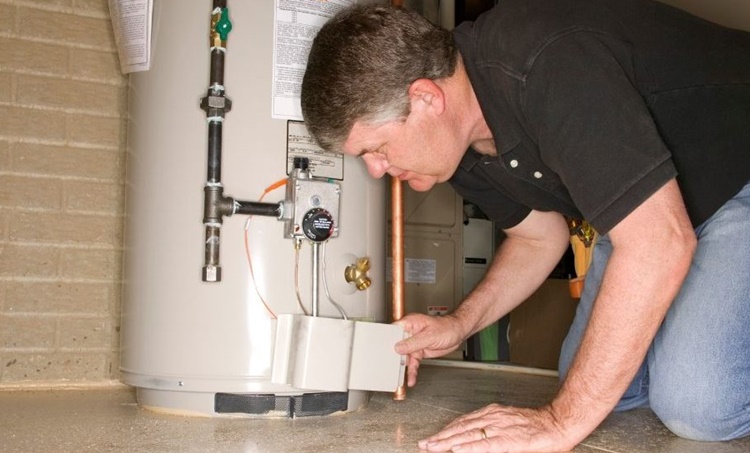Professional Tips on Caring for Your Home's Hot Water SystemBest Practices for Maintaining Your Home's Hot Water System
Professional Tips on Caring for Your Home's Hot Water SystemBest Practices for Maintaining Your Home's Hot Water System
Blog Article
Here below you'll find lots of great information and facts with regards to How to Maintain a Hot Water Heater in a Few Simple Steps.

Warm water is important for daily convenience, whether it's for a rejuvenating shower or washing recipes. To ensure your warm water system runs effectively and lasts longer, normal maintenance is vital. This post provides sensible suggestions and insights on how to keep your home's hot water system to prevent interruptions and costly fixings.
Intro
Preserving your home's hot water system could appear difficult, but with a few easy actions, you can guarantee it operates efficiently for several years ahead. This overview covers whatever from understanding your warm water system to DIY upkeep ideas and knowing when to call expert help.
Significance of Maintaining Your Warm Water System
Routine upkeep not just extends the life-span of your hot water system however also guarantees it operates successfully. Ignoring maintenance can bring about reduced performance, higher energy expenses, and also early failure of the system.
Indications Your Hot Water System Demands Maintenance
Recognizing when your warm water system needs focus can stop major problems. Look out for indications such as inconsistent water temperature level, strange sounds from the heating unit, or corroded water.
Flushing the Water Heater
Purging your hot water heater removes debris buildup, enhancing performance and prolonging its life.
Checking and Changing Anode Rods
Anode poles prevent rust inside the storage tank. Examining and changing them when broken is essential.
Complicated Concerns Calling For Professional Aid
Instances include major leaks, electric troubles, or if your hot water heater is consistently underperforming.
Routine Expert Upkeep Perks
Specialist upkeep can consist of detailed inspections, tune-ups, and making certain conformity with safety standards.
Examining and Changing Temperature Settings
Changing the temperature level setups makes certain ideal efficiency and security.
Do It Yourself Tips for Upkeep
You can execute several maintenance tasks yourself to maintain your warm water system in leading problem.
Looking for Leakages
Consistently check pipelines and links for leakages, as these can cause water damages and higher costs.
Recognizing Your Warm Water System
Prior to diving right into upkeep jobs, it's handy to recognize the standard parts of your warm water system. Normally, this consists of the water heater itself, pipes, anode rods, and temperature controls.
Month-to-month Upkeep Tasks
Routine monthly checks can aid capture minor issues prior to they rise.
Checking Pressure Relief Valves
Examining the stress safety valve ensures it functions correctly and protects against too much pressure buildup.
Insulating Pipelines
Shielding warm water pipelines minimizes heat loss and can conserve energy.
When to Call a Professional
While do it yourself upkeep is useful, some issues call for specialist competence.
Conclusion
Normal upkeep of your home's hot water system is crucial for performance, long life, and expense savings. By adhering to these suggestions and knowing when to look for professional aid, you can make sure a dependable supply of warm water without unforeseen disruptions.
How to Maintain an Instant Hot Water Heater
Before tinkering with your hot water heater, make sure that it’s not powered on. You also have to turn off the main circuit breaker and shut off the main gas line to prevent accidents. Also turn off the water valves connected to your unit to prevent water from flowing into and out of the appliance. 2. When you’re done, you have to detach the purge valves’ caps. These look like the letter “T” and are situated on either side of the water valves. Doing so will release any pressure that has accumulated inside the valves while at the same time avoid hot water from shooting out and burning your skin. 3. When the purge valves’ caps are removed, you have to connect your hosing lines to the valves. Your unit should have come with three hoses but if it didn’t, you can purchase these things from any hardware or home repair shops. You can also get them from retail stores that sell water heating systems. Read the user’s manual and follow it to complete this task properly. When the hosing lines are connected, open the purge port’s valves. 4. You should never use harsh chemical cleaners or solutions when cleaning your unit. Make use of white vinegar instead. It should be undiluted and you’ll probably use about 2 gallons. 5. Now flush your water heater. This task should probably take about 40 minutes. We can’t give you specific directions for this because the procedure is carried out depending on the type, model and brand of your heater. With that being said, refer to the user’s manual. 6. When you’re done draining the unit, you have to turn off the purge port valves again. Remove the hosing lines that you earlier installed on each of the water valves. Put the valve caps (purge port) back in their respective places and be very careful so as not to damage the rubber discs that are found inside these caps. 7. Now that everything’s back in place, check your user’s manual again to find out how to reactivate your water heating system. 8. Once it is working, turn one of your hot water faucets on just to let air pass through the heater’s water supply pipes. Leave the tap on until water flows smoothly out of it. https://www.orrplumbing.com/blog/2014/september/how-to-maintain-an-instant-hot-water-heater/

I have been very intrigued by Tips on Maintaining a Water Heater and I am assuming you appreciated our article. Sharing is caring. Helping people is fun. Many thanks for your time. Revisit us soon.
Schedule Free Estimate Report this page